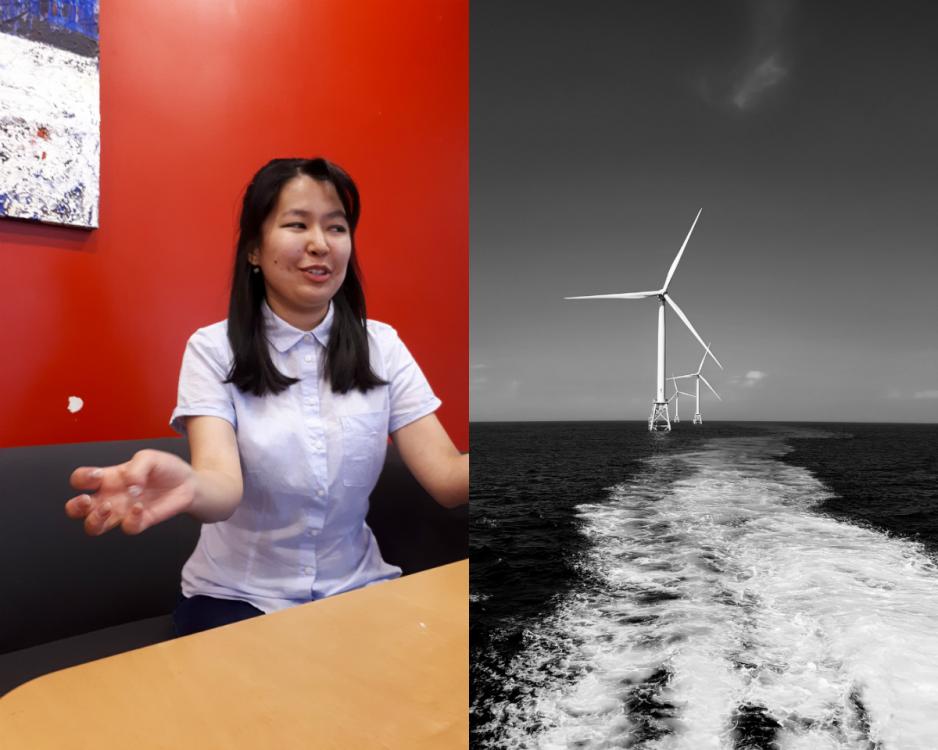Wind Power for Arctic Oil Too Expensive. Yet.

Using wind power as a source of energy for petroleum activities in the Arctic is not viable from a socio-economic perspective. However, that may change.
Using the Johan Castberg field as her case study, master student Kseniya Pak at Nord University Business School concludes that (then-) Statoil made the right decision when the company chose a traditional gas turbine solution for energy supply to the field.
Pak has investigated whether it would be possible to supply the Castberg project with energy from wind power, potentially in combination with gas turbine.
The conclusion appears rather negative for those who carry the hope that wind power may replace energy from gas plants, at least for the foreseeable future.
In order for wind power as energy source to be socio-economically viable, the CO2 taxes and benefits from reduced gas consumption must have been at least tripled, or the investment costs had to be similarly reduced with some 70 percent.
CO2 taxes must increase
However, Kseniya Pak writes, should the CO2 taxes increase up to 11 times their current size, as indicated by the Paris Agreement, and should Norway follow this policy development, the idea about wind power energy for similar projects may end up being economically viable.
Pak’s starting point has been the desire to have green energy options for the oil and gas activities in the Arctic too. It is well known that Statoil (now: Equinor) abandoned the land-to-sea cable alternative to Johan Castberg due to the significant costs involved with the project.
Today’s technology is not ready to be used under the extreme conditions that exist in the Barents Sea and the Arctic in general. Existing offshore solutions e.g. in Denmark and Japan are simply not sufficiently robust, nor are they dimensioned for working that far north.
Nevertheless; the models Kseniya Pak has used in her calculations are transferable to future projects too.
Points out weaknesses in today’s methods
Professor Terje A. Mathisen at Nord University has been Pak’s supervisor. He argues that her master’s thesis demonstrates how improved technical solutions will make windmills more attractive.
- It furthermore points out weaknesses in current evaluation methods, which for instance do not value all kinds of environmental improvements or include all cost elements. The results from this thesis should be of interest for both politicians regulating such construction projects as well as for the companies that seek to better measure profitability of their activities, Mathisen says.
Kseniya Pak admits that she herself was disappointed by her own research results.
This is the future
- I knew that wind power turbines are expensive, however, it was disappointing to see how costly they were. Nevertheless, I believe this is the future.
The technological challenges may be solved through incrementally development of wind power turbines, Pak believes. As for major challenges, she points in particular to large ocean depths and the fact that wind turbines should have a life expectancy equivalent of the exploration projects.
The master student from Tashkent, Uzbekistan wants to continue her studies in sustainable energy solutions and is now applying to PhD programs both in Bodø and in Tromsø.
- I would very much like to continue, both developing the calculation models I have used to investigate the socio-economic viability of wind turbines in offshore activities, and also to look into establishing one central wind power plant that can supply several platforms or projects in the Barents Sea.
Rosneft positive
Kseniya Pak has already been in touch with Russian energy giant Rosneft, with regard to collection of raw data for her further research.
- I was very well received there and was welcomed to visit their offices in Oslo, Pak says, and continues;
- I am convinced that the future lies in green energy sources for petroleum activities too. However, political decisions and targets are needed for companies to start using these, Kseniya Pak says to High North News.
Les artikkelen på norsk
